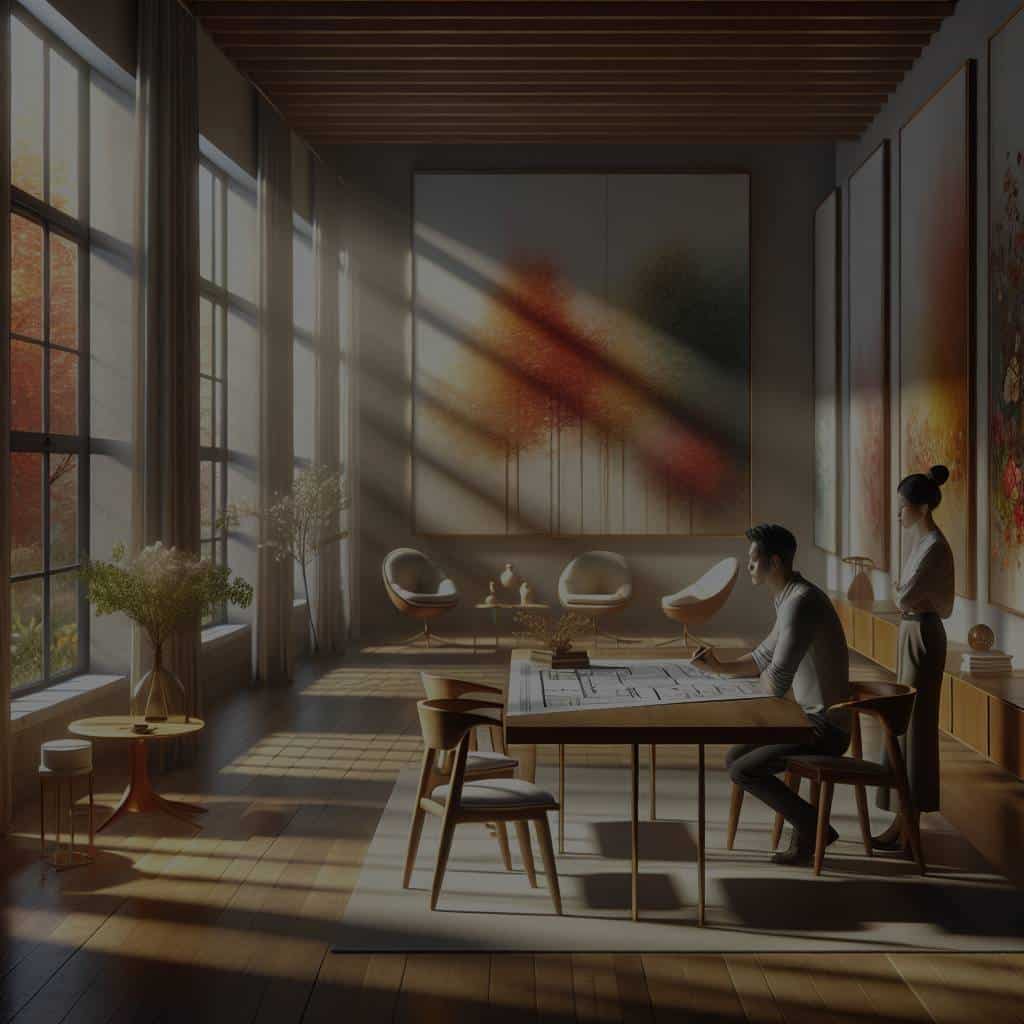How to Choose Artwork That Complements the Natural Light in a Room?

Choosing the right piece of artwork for a room is much more than simply finding a design that you love. The piece should also complement the room’s overall style, color scheme, and most importantly, its natural light. The interplay between the room’s lighting and the artwork can dramatically enhance the overall aesthetic of the space. In this guide, we will explore how to choose artwork that harmonizes with the natural light in a room.
Understanding the Importance of Natural Light in Room Design
Light is an essential component of interior design. It can alter the perception of space, set the mood, and greatly influence the color and texture of a room. Natural light in particular, has a transformative power that artificial lighting simply cannot match. The way the sunlight streams in through a window, casting shadows and highlighting different areas in the room, can create a dynamic and ever-changing decor.
Topic to read : What’s the Best Way to Design a Safe and Engaging Home Playground?
When it comes to artwork, natural light plays a pivotal role in how a piece is viewed. The intensity and direction of the light can either enhance or detract from the artwork. Therefore, understanding the natural light in your room is crucial when choosing artwork.
Considering the Direction of Natural Light
Firstly, consider the direction from which the natural light enters the room. Rooms with north-facing windows receive a cooler, softer light throughout the day. This light can bring out the subtle tones in artworks with complex color schemes. Choose pieces that have intricate details and a range of colors to fully utilize this lighting condition.
Also to see : How to Design a Space-Saving Combined Bathroom and Laundry Room?
In contrast, rooms with south-facing windows bask in warm, bright light for most of the day. This type of light works well with bold and vibrant artworks. The intense light can make the colors pop and give the piece a lively and dynamic feel.
Selecting Artwork Based on The Intensity of Light
The intensity of natural light in a room can vary greatly depending on the time of day, the season, and the weather. Bright, intense light can wash out delicate colors and details, so if your room receives a large amount of sunlight, consider pieces that feature bold, saturated colors.
On the other hand, if the room is softly lit, opt for artworks with delicate tones and intricate details. The low light will allow these details to shine without being overwhelmed.
Taking Wall Color into Account
The color of your walls can also affect how an artwork appears under natural light. Light colors can reflect sunlight, making the room brighter and potentially washing out the colors of the artwork. Conversely, dark walls absorb light, which can help the colors in the artwork stand out.
When choosing artwork, consider how it will look against the color of your wall under different lighting conditions. You might need to experiment with different pieces to find the perfect match.
Factoring in Room Style and Artwork Size
Finally, the style of your room and the size of the artwork play a part in how the piece will interact with the natural light. A large piece of artwork can dominate a small, brightly lit room, while a small piece might get lost in a large, dimly lit space.
Try to balance the size of the artwork with the size and style of the room. Additionally, consider how the style of the artwork complements the room’s decor. A modern, minimalist room might benefit from a piece of abstract art, while a classic, traditional room might be better suited to a more detailed, realistic piece.
Choosing artwork for your home is a deeply personal endeavor, but by considering the natural light in your room, you can make a choice that not only reflects your taste, but also enhances the overall aesthetic of your space.
Incorporating Light Sources and Their Impact on Art Pieces
Considering the natural light that filters into your room is crucial when selecting artwork, but incorporating additional light sources can also play a significant role in enhancing your artwork. Artificial light sources such as wall lights, table lamps or well-placed spotlights can serve as tools to further highlight your selected pieces and add visual interest to the room.
When choosing a piece of art, consider how additional lighting may impact its appearance. For example, spotlights can create a focal point and draw attention to a piece of wall art, bringing out its colors and enhancing its presence in the room. Table lamps, on the other hand, cast soft and ambient light that can highlight the intricacies of smaller art pieces and create a warm, inviting atmosphere.
Light sources should not only complement the artwork but also the overall interior design of the room. A contemporary living room, for instance, might benefit from sleek, modern wall lights that highlight a bold canvas art, while a traditional setting could be enhanced by vintage table lamps that cast a warm glow on classic art pieces.
An interior designer can provide valuable insight into the best placement of light sources to emphasize your chosen artwork. They can also recommend appropriate art that complements the room’s color palette and style while taking into consideration the natural and artificial light sources.
Using Artwork to Enhance Natural Light
Art placement and the type of art chosen can significantly affect how natural light is distributed within a room. Artworks with reflective surfaces or metallic elements can bounce light around and make a room feel brighter. Similarly, lighter-colored artwork can enhance a room’s brightness by reflecting natural light.
Large windows that let in a lot of natural light make an excellent backdrop for larger art pieces. The light streaming in can illuminate the artwork beautifully, enhancing its colors and creating a captivating focal point that will command attention.
In rooms with less natural light, strategically choosing art can help improve the lighting situation. Light-colored art pieces or ones with reflective surfaces can help brighten the space. Wall mirrors, for instance, not only serve as unique pieces of wall art but can also effectively reflect light and make a space seem more luminous and spacious.
Furthermore, the position of the artwork in relation to the light source can greatly affect its appearance. An artwork placed directly opposite a window might appear washed out during the day, while one placed at an angle might receive a softer, more diffused light.
Conclusion
Choosing artwork for your home is not just about selecting a piece that you like, but also about considering how that piece will interact with the natural light in your space. Understanding the direction and intensity of natural light, considering wall color, incorporating additional light sources, and using artwork to enhance natural light can significantly influence how a piece of art is perceived and enjoyed.
Remember, the right art piece in the right place can transform a room, creating a pleasing ambiance that reflects your personal style and complements your interior design. So, don’t rush the process. Experiment with different pieces, positions, and lighting conditions until you find the perfect combination. And most importantly, choose art that resonates with you and makes your space feel like home.
